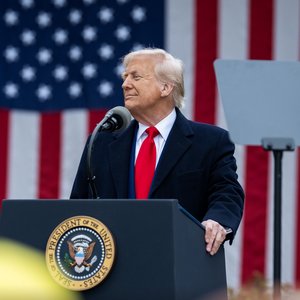We need to re-think the way we approach aquaculture if it is to fulfill its potential to help meet the protein shortfall for a globally exploding population. This is the message aquaculture stake-holders heard at Biomin’s World Nutrition Forum, held recently in Vancouver, Canada.
“In the ocean professions, especially to fisheries managers, conservationists, and marine science academic institutions in general, aquaculture is a disruptive social ecological set of pioneering technologies” – Dr. Barry Costa-Pierce.
Some 800 invited participants from all sectors of livestock production gathered for the feed additive company’s biennial conference, which this year focused on “Driving the Protein Economy”. For aquaculture attendees, three important themes emerged: the threat of mycotoxin contamination, the importance of biomics, and the recognition of aquaculture as an important provider of high quality, nutritious protein. However, in spite of its many advantages over other proteins in terms of nutritional benefit, life cycle analyses, input and protein efficiencies, carbon footprint, and nitrogen and phosphorus discharges per unit of protein production, a lot still has to change if we are to feed 9.7 billion people by 2050 and a projected 12.3 billion people by 2100, according to Professor Barry Costa-Pierce from the Department of Marine Sciences, University of New England, USA.
“The world will need all the protein it can produce sustainably from capture fisheries, but that will not be enough. Freshwater aquaculture will expand in Asia but the expansion of mariculture will be the most important priority for the world’s protein future”, Dr. Costa-Pierce told delegates.
He said that in a global assessment of mariculture potential for just three species of the thousands of plants and animals that are available for the development of new ocean food systems, 190,000 km2 was available now having the most suitable environmental and economic conditions for the expansion of mariculture. For this area, and for the three species considered (cobia, salmon and mussels), and at current rates of technology, developing just 1% of the area would produce 10.1 MMT, developing 5% of the area would produce 50.5 MMT. Technological advances could expand the global area available for mariculture to more than 2 million km2. Some of the “non-mariculture nations” – i.e. those with no production as of 2013 - have among the world’s greatest mariculture potential and are among the world’s most poverty-stricken today and/or are facing enormous challenges due to accelerated climate change. However, to realize this potential, management conflicts, due largely to educational deficiencies between fisheries and aquaculture managers, will need to end.
“Aquaculture is routinely managed under agriculture, environment or fisheries agencies that have little knowledge, training or experience in aquaculture with its unique policy needs. Aquaculture and fisheries are so separate structurally and functionally in many countries’ governance systems and academic institutions that institutions and professionals have lost track of their common goal of delivering environmentally friendly, safe, sustainable seafoods to the people they serve. Sensible regulatory alignment is needed to deliver products that sustain livelihoods”, Dr. Costa-Pierce said.
More broadly there is a need for institutions to train the next generation of professionals in foods ecosystems. This would create a generation of stewards working in a new paradigm of planning for the supply of ocean and land foods. These professionals would develop and implement more comprehensive “Earth Foods Systems Plans”.
In the ocean professions, especially to fisheries managers, conservationists, and marine science academic institutions in general, aquaculture is a disruptive social ecological set of pioneering technologies. Professional, regulatory, “decision-maker communities\" in the aquatic natural resource areas are dominated by fisheries and conservation professionals. More comprehensive training needed for a sustainable food future would result in the development of a cadre of decision-makers who could conduct the integrated planning for agriculture, aquaculture, fisheries, natural ecosystems, and their allied regional social infrastructures. The target areas of the world where this is most needed are where integrated freshwater aquaculture and mariculture can be developed to prevent the untold destruction of terrestrial ecosystems to create more arable lands for terrestrial food production.
Costa-Pierce argued that there is an urgent need to develop cooperative, place-based, global centers of excellence in ocean foods ecosystems. The focus of these centers would be multidisciplinary investigations on experimental, but commercial-sized, mariculture systems located in the EEZ of nations that were representative of their ocean region’s social-ecological-economic conditions. There would also be the innovative opportunities to document the positive roles that restoration aquaculture can have in the Earth\'s ocean biogeochemical cycles, habitats, ecosystems, and societies of coastal ocean nations worldwide, as there are numerous examples of aquaculture facilities revitalizing natural aquatic habitats, ecosystems and fisheries, as opposed to degrading the natural environment, as much of terrestrial agriculture is doing. Without such multidisciplinary centers working on real systems, investment plans for the sustainable expansion of mariculture will suffer from a lack of a rational, scientific basis for planning and policy, and continue to be replaced by heresy, junk science, and advocacy, he concluded.
Learn more
Dr. Costa-Pierce is the subject of the Aquafeed Interview in the December 2015/January 2016 issue of AQUAFEED: Advances in Processing & Formulation, where he will expand on this topic.







